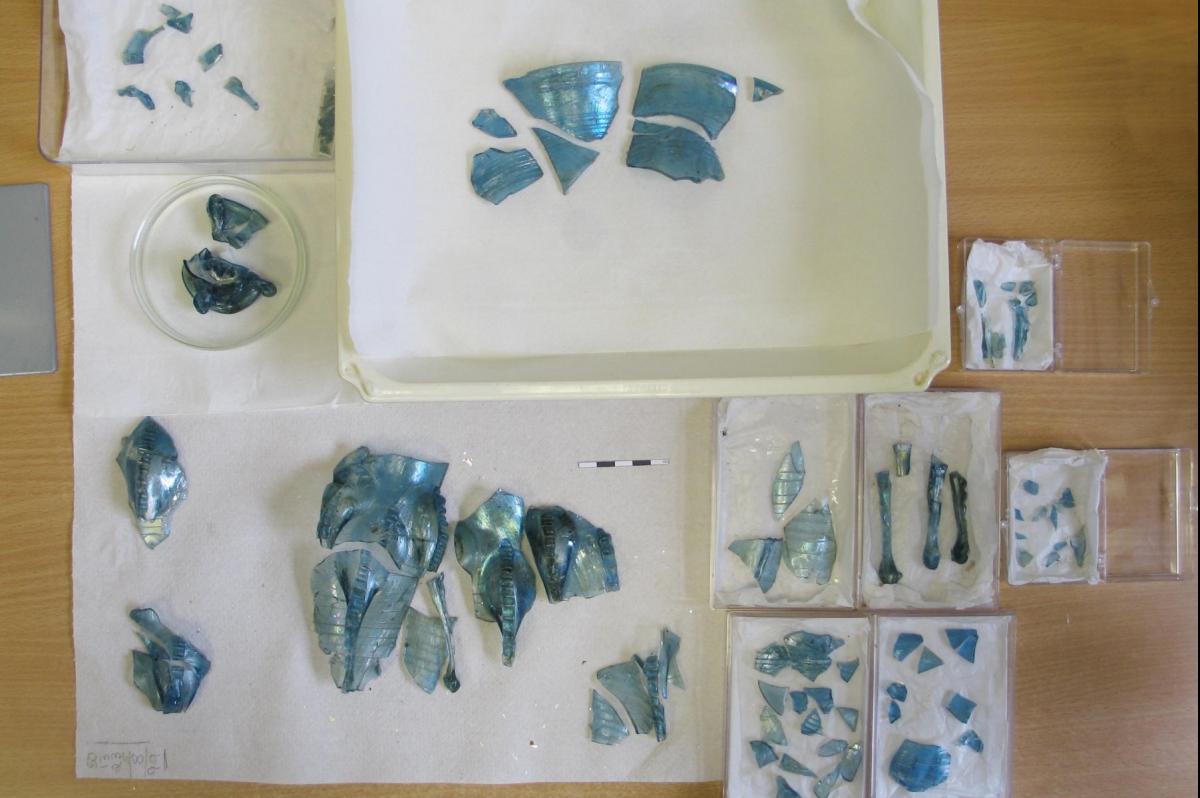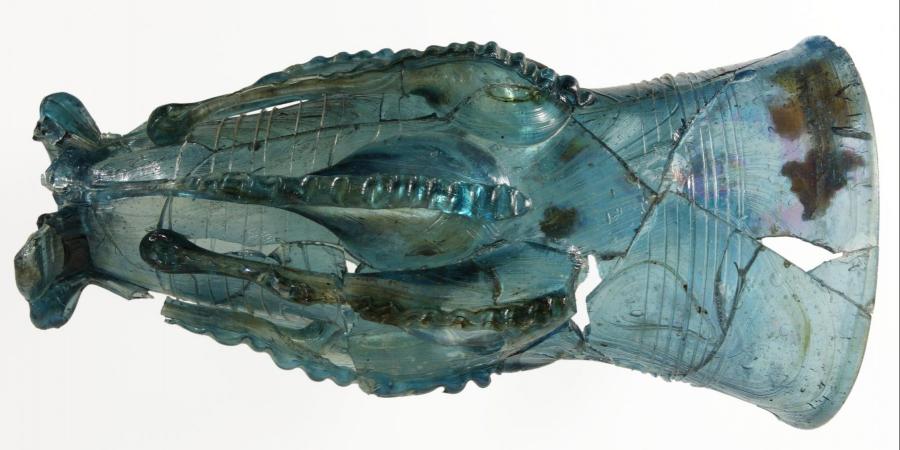Reconstruction of an Anglo-Saxon glass claw beaker
Part of an Anglo-Saxon cemetery was excavated by Wessex Archaeology just to the north-east of Wrotham, Kent, in advance of the laying of the Farningham to Hadlow Natural Gas Pipeline in 2008-9. One of the graves contained a rich assemblage of high status grave goods, including weapons (sword, spearhead, shield boss), exquisitely decorated metal drinking horn mounts, and numerous fragments from a glass ‘claw beaker’ – so-called from the claw-like handles or lugs projecting from the vessel’s sides.

Such vessels are rare finds, particularly whole examples, although several are known from other Anglo-Saxon cemeteries in Kent. Our example is in a pale blue glass, and is likely to have been made on the Continent, probably in what is now Germany. The challenge our conservator faced was to reconstruct the vessel from these fragile surviving pieces, primarily as an aid to illustration. As might be expected, this is an extremely delicate operation, and time-consuming, as each stage of reconstruction has to be allowed to ‘set’, before the next stage can begin. Fragments of similar appearance are grouped, and then assembled into sections, which are then gradually pieced together. The finished article is a testament to the skill and steady hands of the conservator.

The adhesive that was used can be removed and replaced if the beaker ever goes on permanent display in a museum. Some adhesives react with each other to produce a permanent bright yellow discolouration, so the one used on the ‘claw beaker’ was carefully chosen to avoid any chance of this happening.

